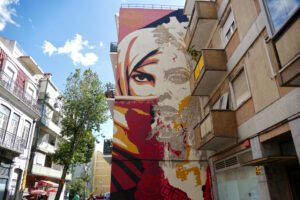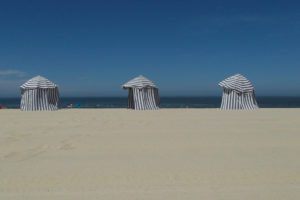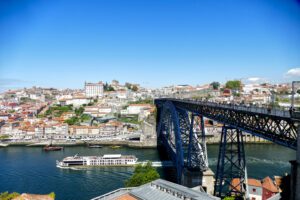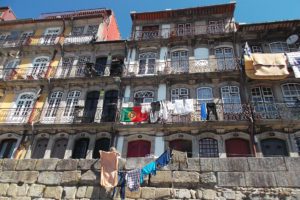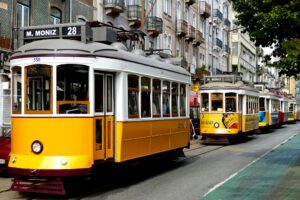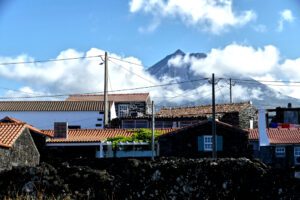Graciosa Island is the second-smallest of the Azores Archipelago and is often overlooked and underrated. Therefore, I think it’s time to show you why you should definitely visit Graciosa, the hidden gem that offers a peaceful retreat full of natural beauty and cultural richness.
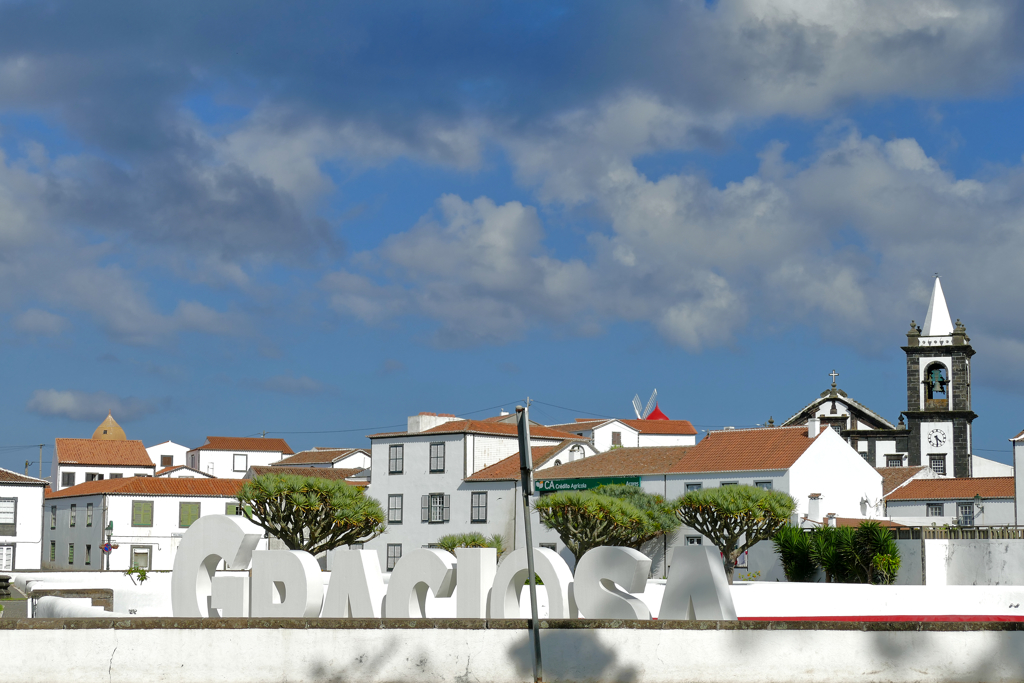
Why Graciosa?
“Why did you spend three days on Graciosa?” asks Jose as he proudly guides our lot across Pico, the second-largest of the Azores and home to Portugal’s highest mountain. Actually, his question sounds more dismissive than interested.
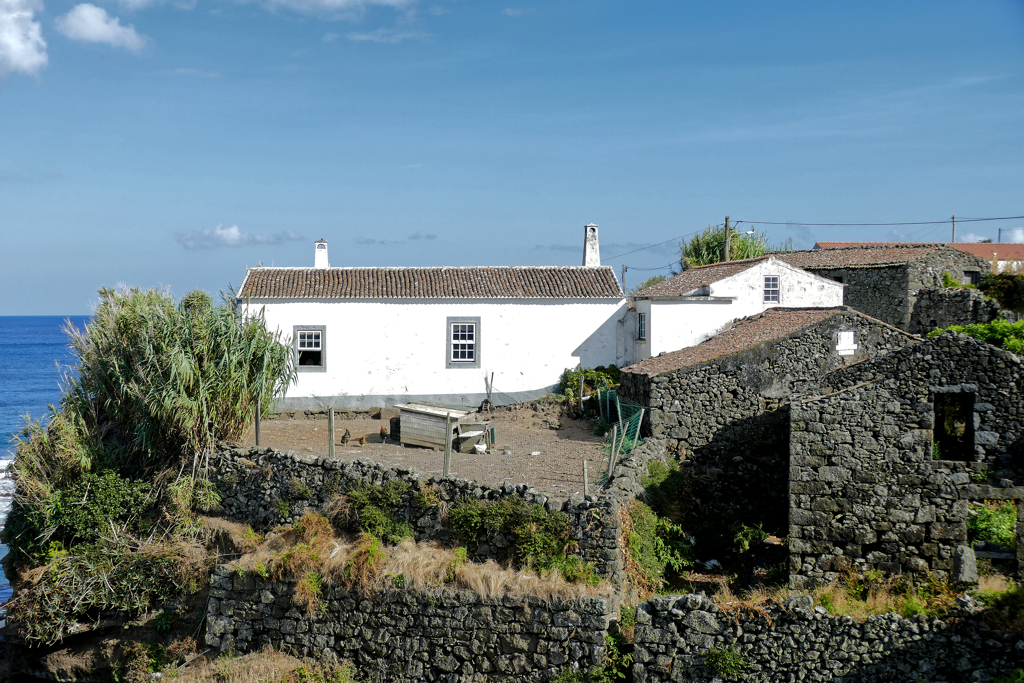
Well, just like his home Pico, Graciosa also comes second – only that it comes second from the other end. It is the second-smallest of the Azores. And where the Azores are already quite out of the loop, Graciosa is even off the beaten path when it comes to the other Azores islands. No high mountains like in Pico, no fire-spitting craters like in São Miguel, no fancy sailing marina like in Faial. Just rolling hills, wide meadows, grazing cows, and lots and lots of peace and quiet. Somehow, I think that Graciaso is the closest I can get to what the Azores were like a few decades ago. And since I want to visit six of the nine islands in just three weeks, at least one of them should be a real haven of peace.
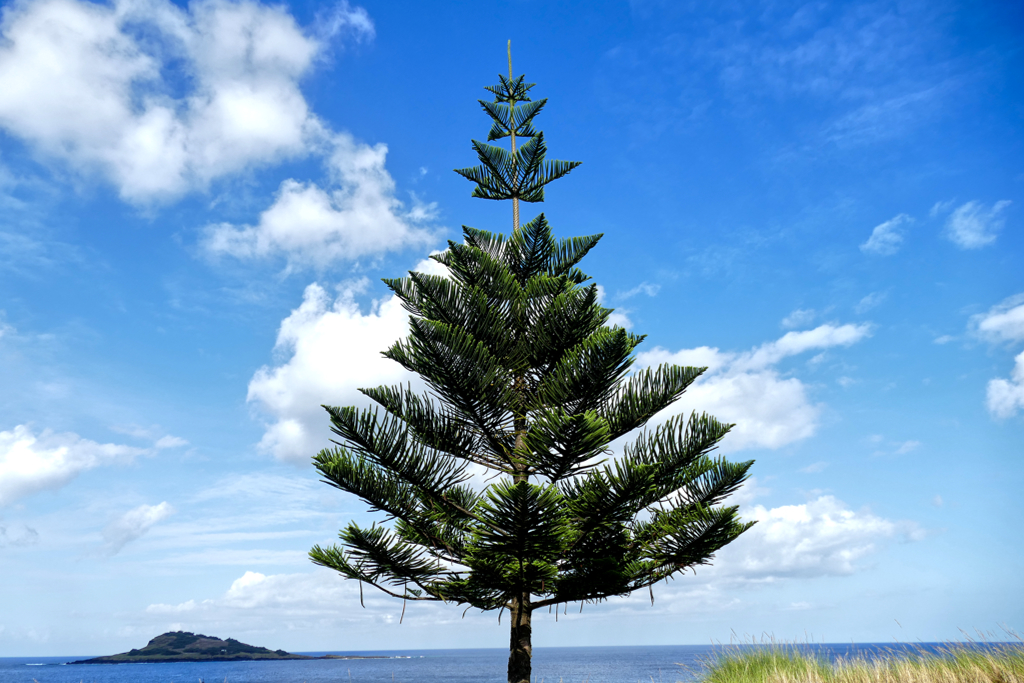
Also, the fact that two planned days ultimately turn into three is the price for Graciosa’s remote location. Now, in early autumn, the sea is getting a little rougher so the ferry cannot dock safely. That’s why my passage is canceled at short notice just a few hours before departure and I have to frantically make sure that I can at least fly out the next morning. Things don’t always happen the way you planned and would like them to.
Graciosa
Graciosa is the northernmost of the five islands of the central archipelago and covers only about 60 square kilometers of rather low-lying terrain.
The island’s volcanic origins are most evident in the Caldeira da Graciosa, a large crater that contains a lava cave called Furna do Enxofre. This cave features a sulfur lake and a stunning dome-shaped ceiling.
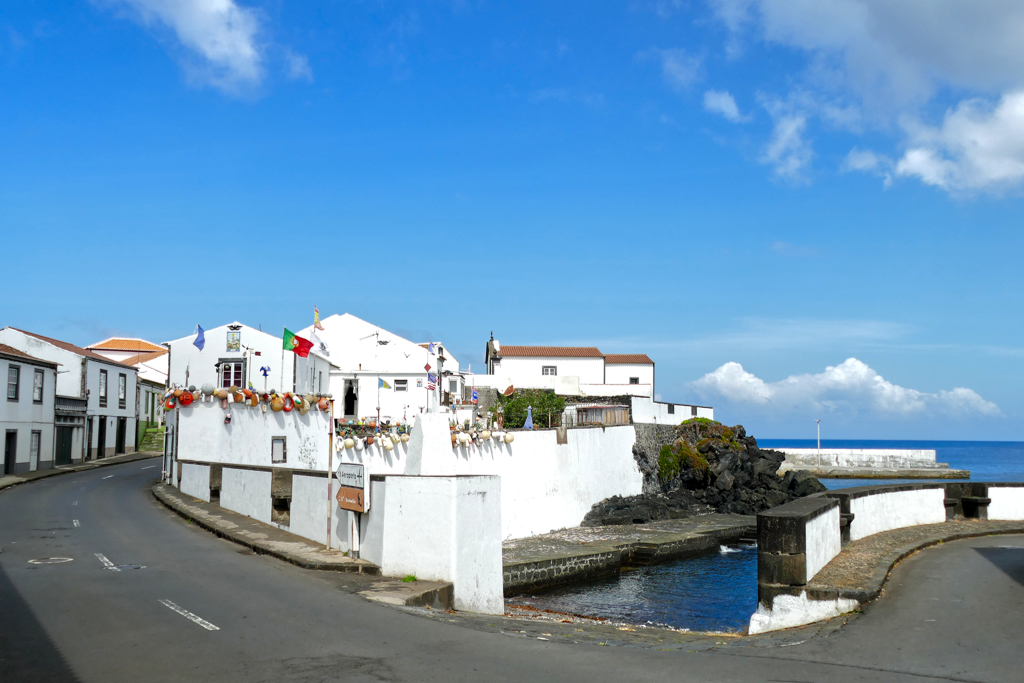
Clearly, Graciosa’s culture is deeply rooted in its maritime and agricultural heritage. The island’s settlements have charming streets lined with whitewashed houses, traditional windmills, and historic churches. Graciosa is called the White Island for a reason!
Compared to other Azores islands, far fewer tourists venture to this hidden gem. This of course makes Graciosa ideal for travelers looking for peace and quiet. Activities include hiking, exploring volcanic formations, swimming in natural pools, and enjoying the island’s rural charm.
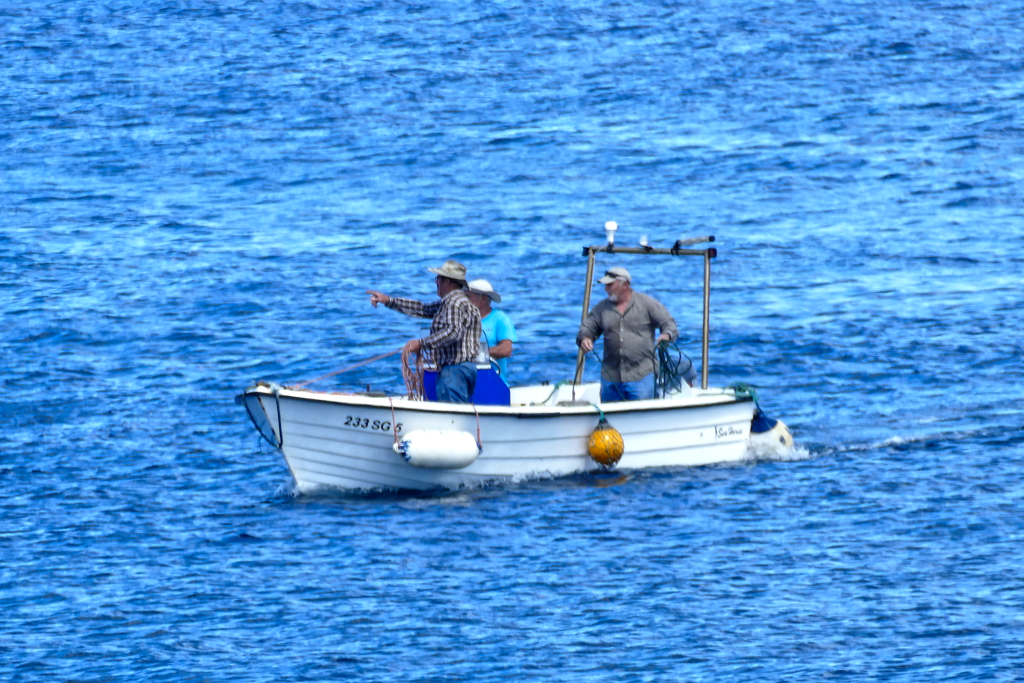
In 2007, Graciosa was declared a UNESCO Biosphere Reserve due to its rich biodiversity and the importance of its natural ecosystems. The island is home to unique plant species, and the surrounding waters are home to diverse marine life. Due to its mild climate, the island is brimming with lush agriculture, including vineyards, pastures, and corn and potato fields.
Praia de São Mateus
It’s just after seven when I wake up. Through the panes of the two windows in my room, I see that the sun has colored the sky over the Atlantic in a dramatic red. One of the windows grants an idyllic view of a small town and a tiny island in front of it. The other one offers a grand vista of the island’s highest mountain.
The only sounds that can be heard are the incessant cooing of the countless pigeons outside the window. In the far distance, I hear a dog barking briefly, then a rooster crowing. Then it’s completely quiet again.
Except for the pigeons.
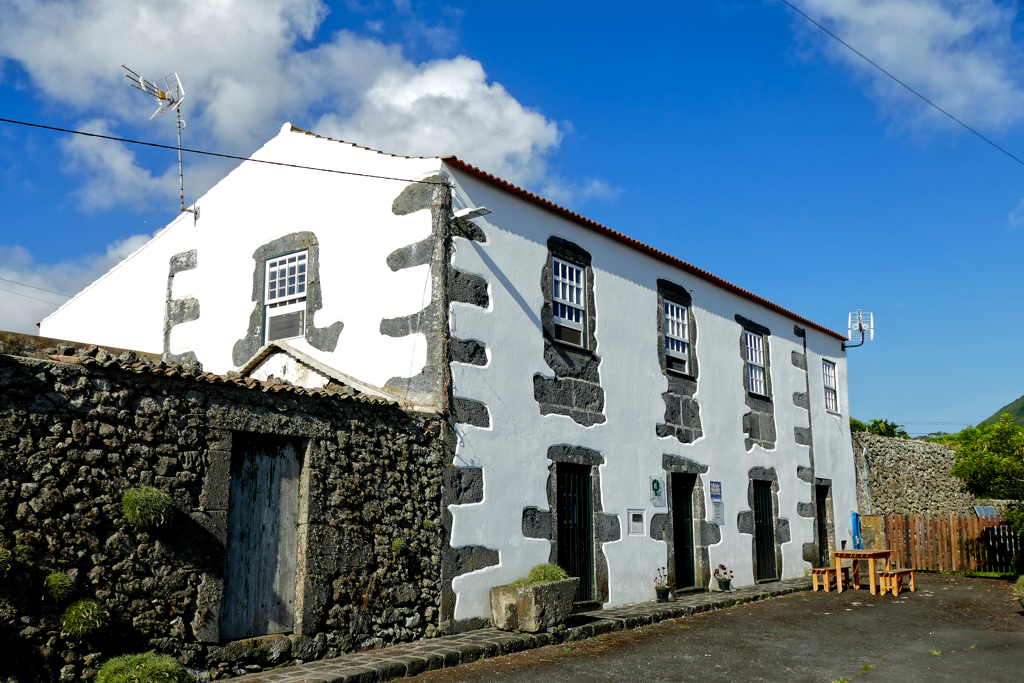
Yesterday afternoon I came to Graciosa. Jorge drove me in his cab from the airstrip north of the capital Santa Cruz da Graciosa in about 15 minutes to a small fishing town. During the trip, he listed everything he thought was worth knowing about Graciosa. When we arrived at my final destination, he urged me to take a photo of his business card, which he had taped to the driver’s door. I did it more out of obedience, as I didn’t yet know that this photo would serve me well.

Jorge left me in front of a quite massive building. A structure that certainly had to withstand some pretty heavy storms over the years. It lies idylically about ten minutes on foot above Praia de São Mateus. Praia de São Mateus is the second largest town on the island, we’re talking a bit over 700 people. It’s picturesque yet largely unspectacular.
Praia’s Praia
What sets São Mateus apart is its Praia, hence, the beach. It is characterized by dark volcanic sand and unique lava rock formations, which provide a striking contrast against the deep blue Atlantic Ocean. Also, it is well-protected, making the waters calm and suitable for swimming. Permanently installed parasols and comfortable loungers ensure perfect beach fun – totally free of charge!
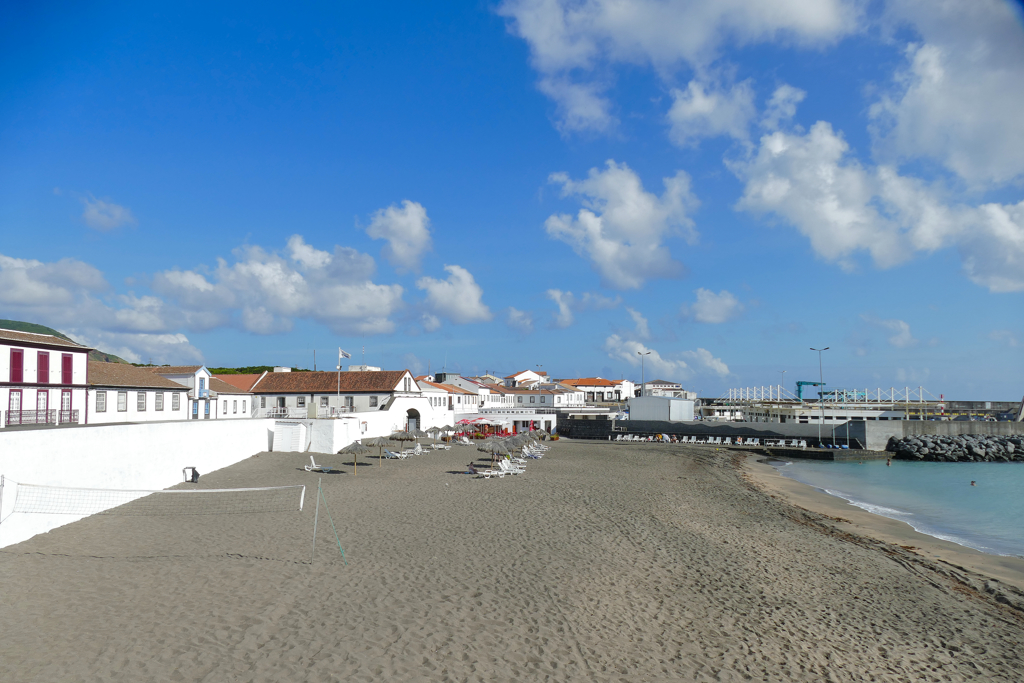
So I spend the morning lazying on the beach. I’m swimming, reading, and napping, and around noon, I decide that it’s time for some action.
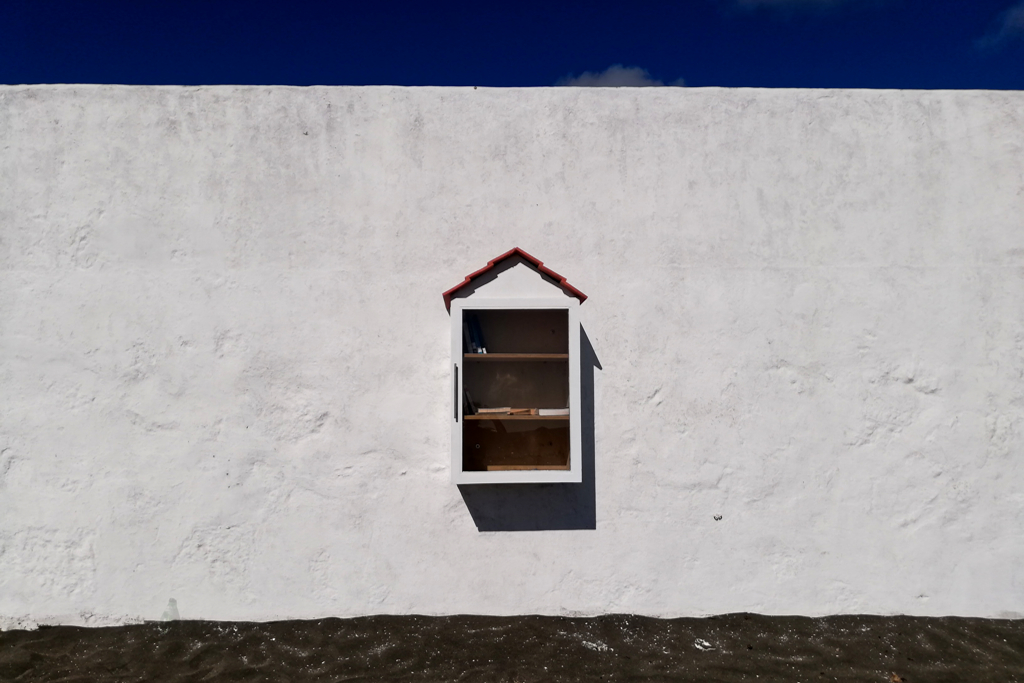
On an island with a total population of around 4,300, the action is limited to a trip to the capital. And no, I won’t take the horse-drawn carriage. It’s Saturday, and on Saturday there are two buses on Graciosa. One just before nine and one around half past one.
I hurry to the bus stop.
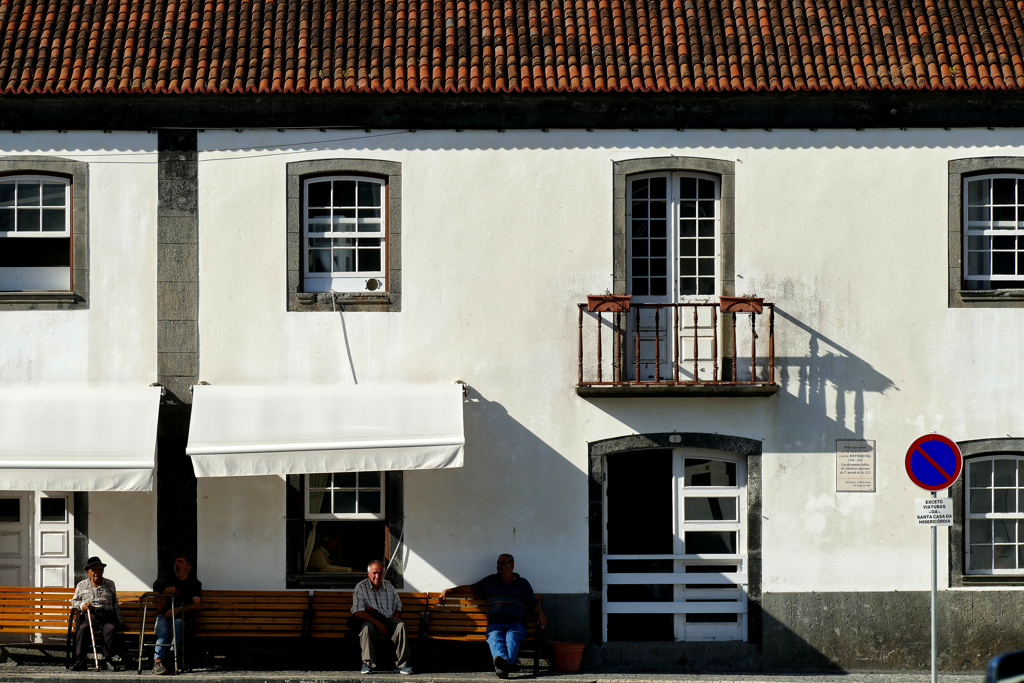
I don’t have to wait too long, because as is customary in places where only a few buses carry even fewer passengers, the bus is a couple of minutes early. I’m not particularly surprised to be the only passenger. What surprises me, however, is the fare. I thought it was because of my poor Portuguese that I understood the trip would cost 1.23 €uros. But no, I pay exactly 1.23. As we speed towards Santa Cruz, I contemplate how they came up with this sum. Did they simply use the number sequence 123? Did the crooked amount arise from VAT? While I’m still pondering, we reach Santa Cruz and I wish the driver a nice weekend because that was the last bus for the day.
There will be no public transport until Monday.
Santa Cruz da Graciosa
Santa Cruz da Graciosa is nothing to write home about, however, the town is quite charming. I walk around the pretty Praça de Fontes Pereira de Mello. Men are sitting in front of a bar between two small supermarkets, drinking beer from cute mini bottles, smoking, and looking curiously at what I’m looking at. There’s just not that much to do and see here, so a woman looking around is a certain attraction.
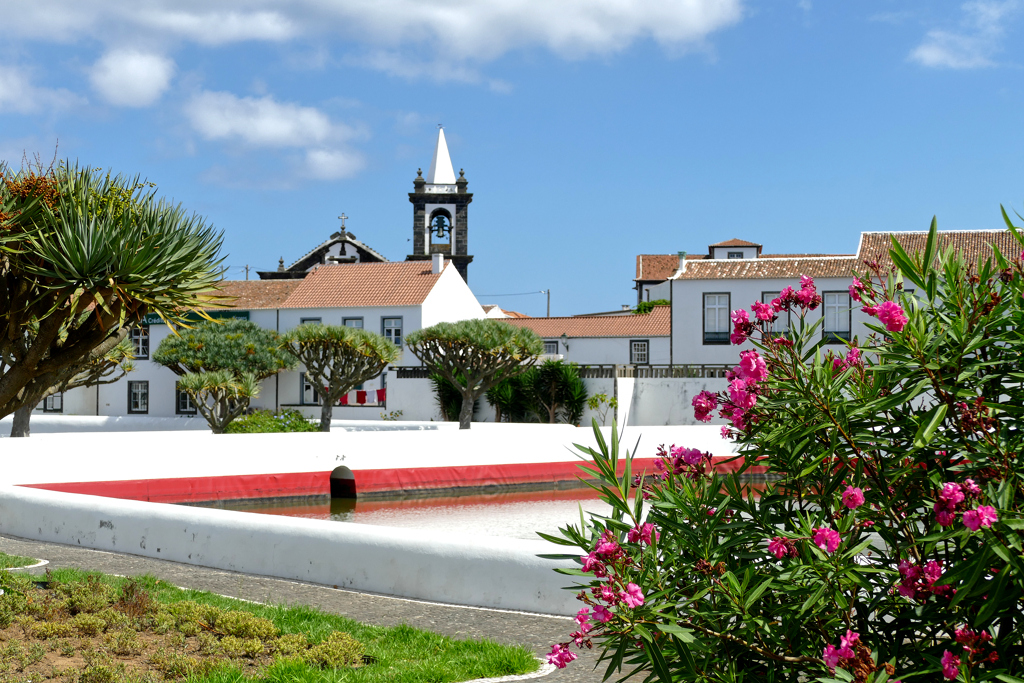
Narrow cobblestone streets are lined with traditional whitewashed buildings featuring red-tiled roofs and elegant wrought-iron balconies.

I leave the square to the north, pass the city museum, and come to the restaurant Costa do Sol. Jorge recommended that to me yesterday on our trip from the airport, so I decide to have lunch there.
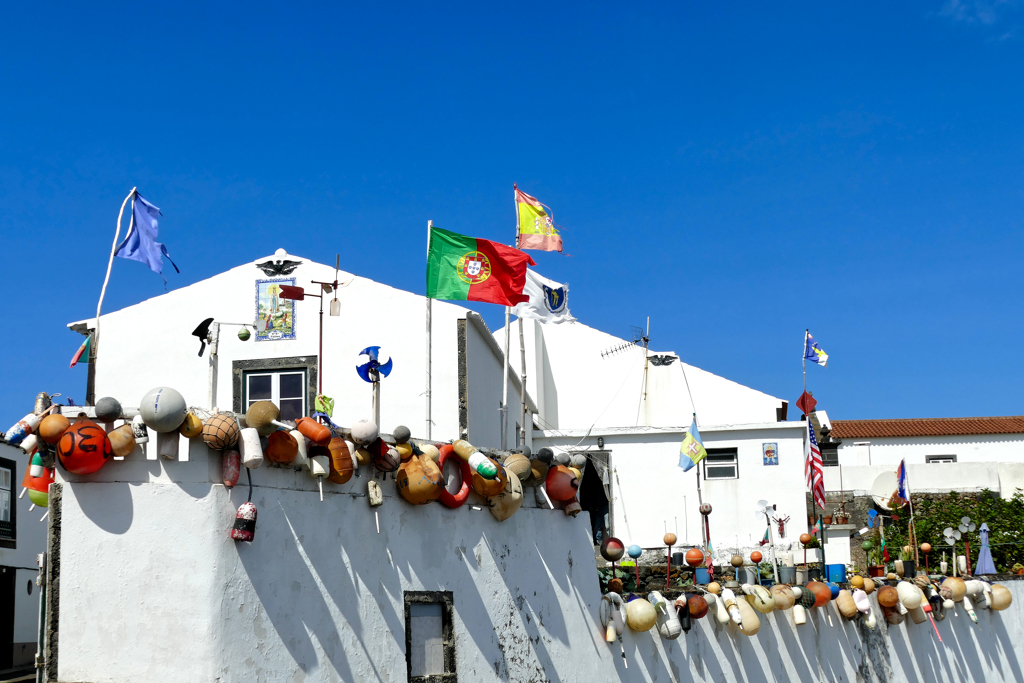
Eventually, I stroll around, watch the bathers at the Zona Balnear da Calheta, and cross the Praça de Fontes Pereira de Mello two or three more times. It is due to a lucky coincidence – or perhaps Graciosa’s size – that as I cross the square for a fourth time, I see Jorge sitting on a bench doing nothing. We are both delighted. He because he can earn some money with an unexpected tour, and me because my return to Praia de São Mateus is all set.
I think that’s called win-win.
Graciosa’s Windmills
Some real landmarks in Graciosa are the island’s windmills. They are designed in a Dutch style, characterized by their cylindrical white stone structures topped with conical, brightly colored roofs, often painted red or blue. These roofs support wooden sails, which historically were rotated to catch the wind. This design stands out from the more common Mediterranean or traditional Portuguese windmills, lending the island a unique charm.
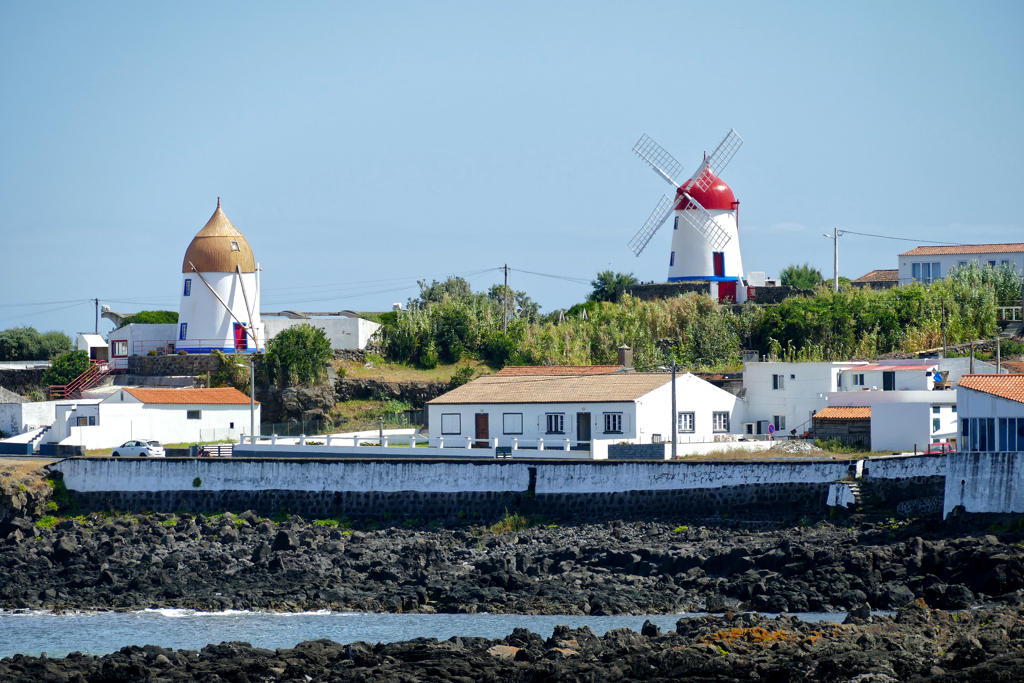
Built primarily in the 19th and early 20th centuries, the windmills were once used to grind corn and wheat into flour, a staple food source for the local population. Given Graciosa’s windy location, these mills were an efficient and sustainable solution for milling grain and contributed significantly to local agricultural practices.
While many of the windmills fell into disuse as technology advanced, several have been restored in recent years, both by the government and private owners. These restored mills are cherished as cultural and historical symbols of Graciosa’s heritage, and some have even been converted into tourist accommodations or museums where visitors can learn about the island’s agricultural history.
Some of the best-preserved windmills are found around the main towns of Santa Cruz da Graciosa and Praia de São Mateus. However, as you drive or hike around the island, you’ll spot more of them, beautifully set against the island’s rolling hills, vineyards, and volcanic landscapes.
Taking a Hike
So I was basically done: I had spent some time on the beach, I had taken a stroll criss-cross Praia de São Mateus, and paid Santa Cruz da Graciosa an extended visit. If it were up to me, that would have been it. I was ready to continue my journey across the Azores.
The call came around half past nine in the morning: “Hello, I’m calling from Atlânticoline. Your ferry can’t get to Graciosa this evening. Do you want to travel with us in three days, or should we reimburse you for the ticket?”
Uh – neither!
I had planned to take the ferry to São Jorge in the evening, my hotel there was booked, my suitcase was packed. But my plans didn’t impress the very professional lady on the phone one bit.
We hung up and I got in a frenzy to book a flight as quickly as possible, at least for the next day.
I got the last seat on the morning flight.
Killing Time
So I had another unexpected 24 hours.
What now?
I had actually been a bit disappointed not to be able to visit the thermal springs in Carapacho. Because apart from the pleasant beach area in São Mateus, there are several natural pools formed by volcanic rock around the island, which provide a unique swimming experience. The most popular spot for relaxation, however, is the spa complex in Carapacho. In addition to some tidal pools, there is warm, sulfur water that has treated rheumatism and skin diseases since 1750!
Due to this unexpected extra day, I had the opportunity to go there. I could have thoroughly organized the trip by public bus. But somehow, the morning rebooking endeavor had exhausted me a bit.
I wasn’t in the mood for planning, organizing, or any other kind of bigger action.
Following the Herd
Right behind the guesthouse, the road continued to the village of Fonte do Mato and climbed from there up the former volcano in a wide arc and gentle incline.
During my beach day, I had seen a hermitage way up high above Praia de São Mateus.
It should now become my hiking destination.
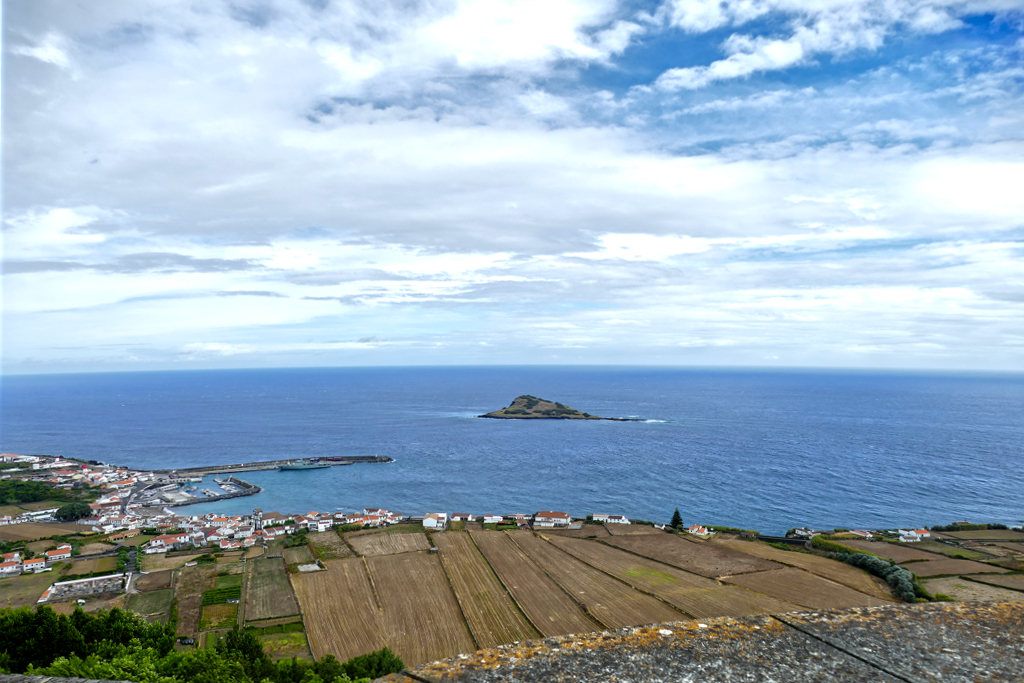
Unsurprisingly, Graciosa’s hinterland is even quieter than the settlements. I walk up the country road. The only two-legged creature I meet is a farmer who rattles past me on a tractor. Sitting behind him in a rather adventurous way is a large dog that seems to be laughing. Or maybe it’s just the wind distorting his facial features.
Other than these two, all I see are cows.
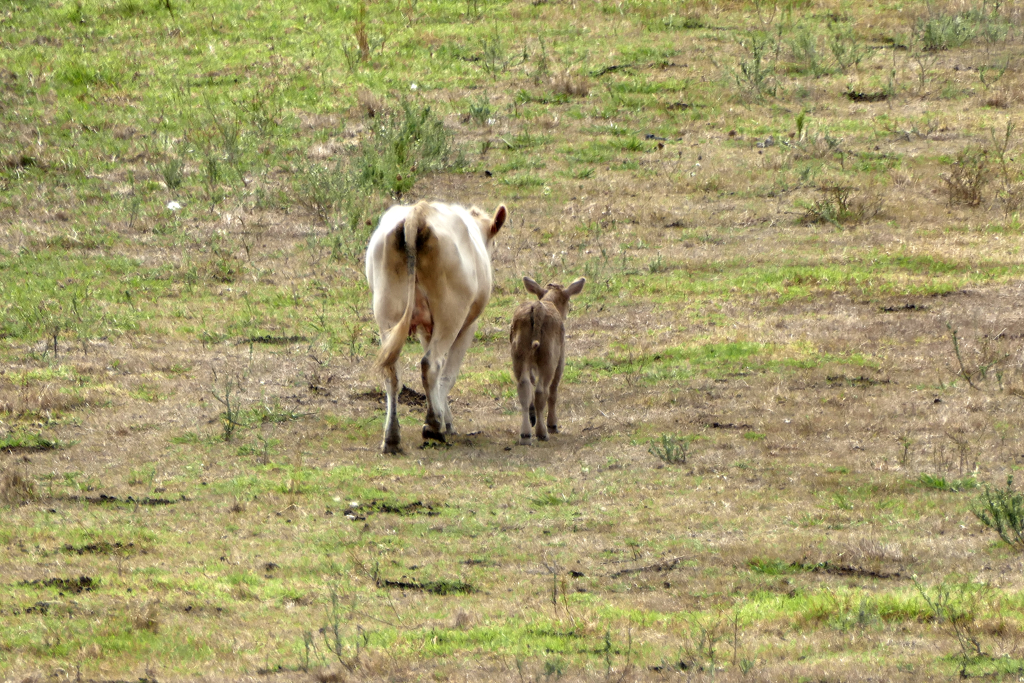
Like other islands in the archipelago, Graciosa has a long tradition of dairy farming. Its lush green pastures and mild climate create ideal conditions for raising cattle. Therefore, cows play a central role in the agricultural life of the island.
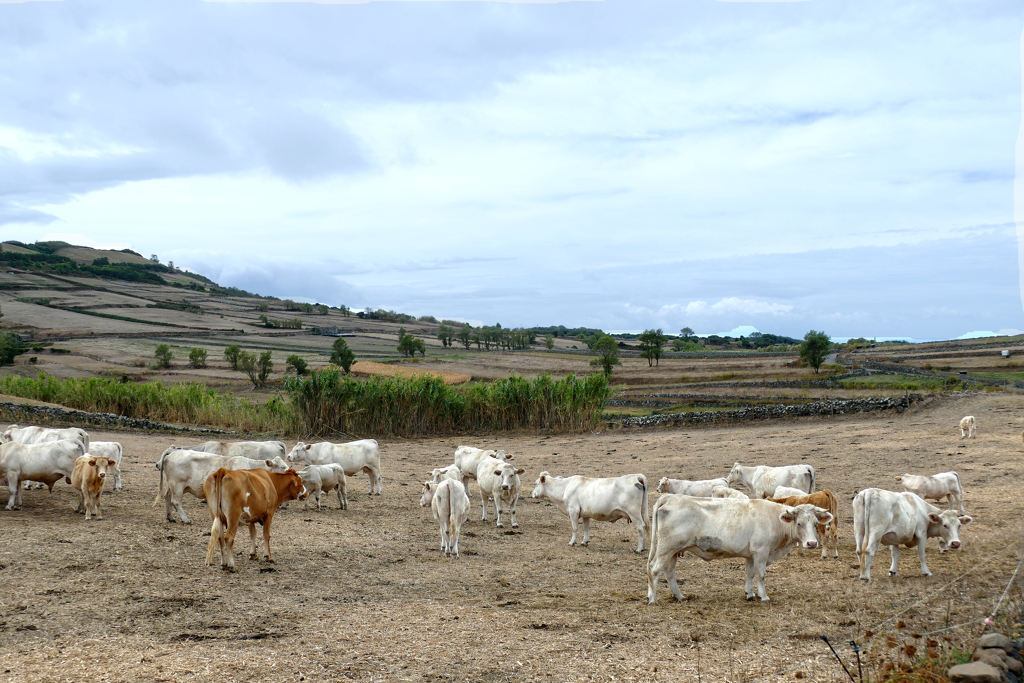
Many families on Graciosa have been involved in cattle farming for generations, and the techniques, traditions, and knowledge are passed down over time. It is often done on a smaller scale, obviously, allowing for more sustainable and eco-friendly practices. Cows grazing freely on pastures not only contributes to animal welfare but also reduces the environmental impact of dairy farming.
I know that this free-range lifestyle and natural diet contribute to the quality of the milk the cows produce.
But I also know that I’m a bit afraid of cows in the open wild.
I’ve Heard It Through the Grapevine
Other traditional agriculture includes the cultivation of wine. Graciosa’s volcanic origin means its soils are rich in minerals, which contribute to the unique character of its wines.
Given Graciosa’s windy conditions, traditional vineyard plots are often sheltered by low basalt stone walls. They protect the vines from strong Atlantic winds. Also, they create microclimates that support the ripening.
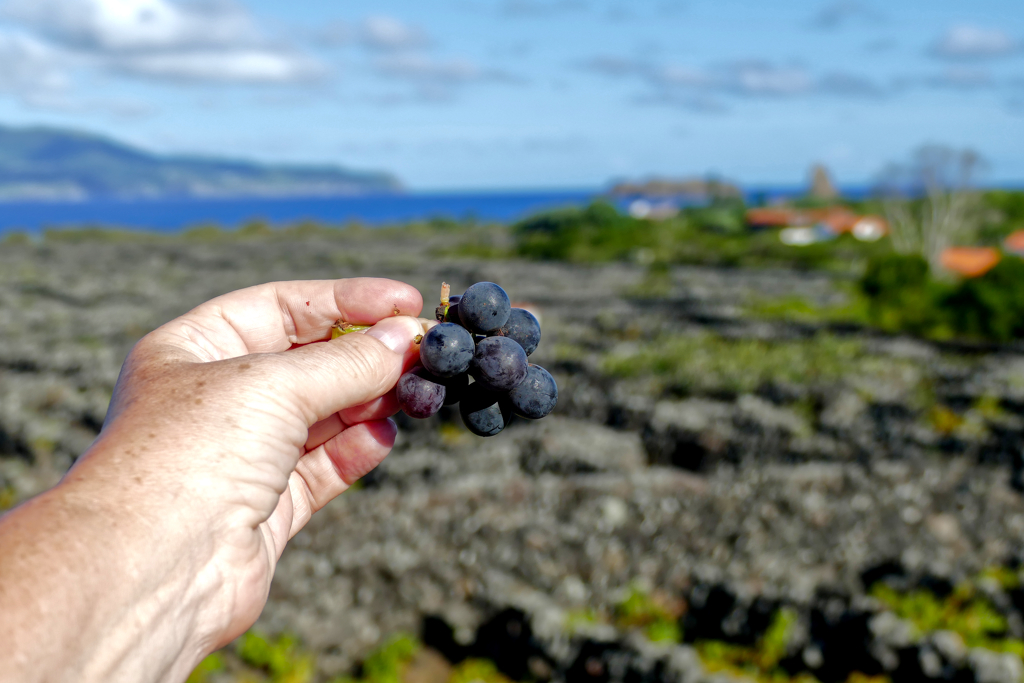
Due to its limited land area, wine production in Graciosa is relatively small-scale. However, the focus on quality over quantity has led to wines that are highly valued for their mineral, earthy characteristics. As part of the Denomination of Controlled Origin DOC label, Graciosa’s wines have received high recognition in recent years.
South of Fonte do Mato lies the island’s vineyard area, Pedras Brancas, where visitors can learn about the history of Graciosa’s wine culture and taste the island’s wines.
Practical Information
How to Get There
By Plane
The Aerodromo da Graciosa Airport is located around two kilometers west of the island’s capital Santa Cruz da Graciosa. SATA Air Açores is the only airline with daily connections to and from the island of Terceira. From there, you can take connecting flights to all other islands as well as to mainland Portugal and even the USA.
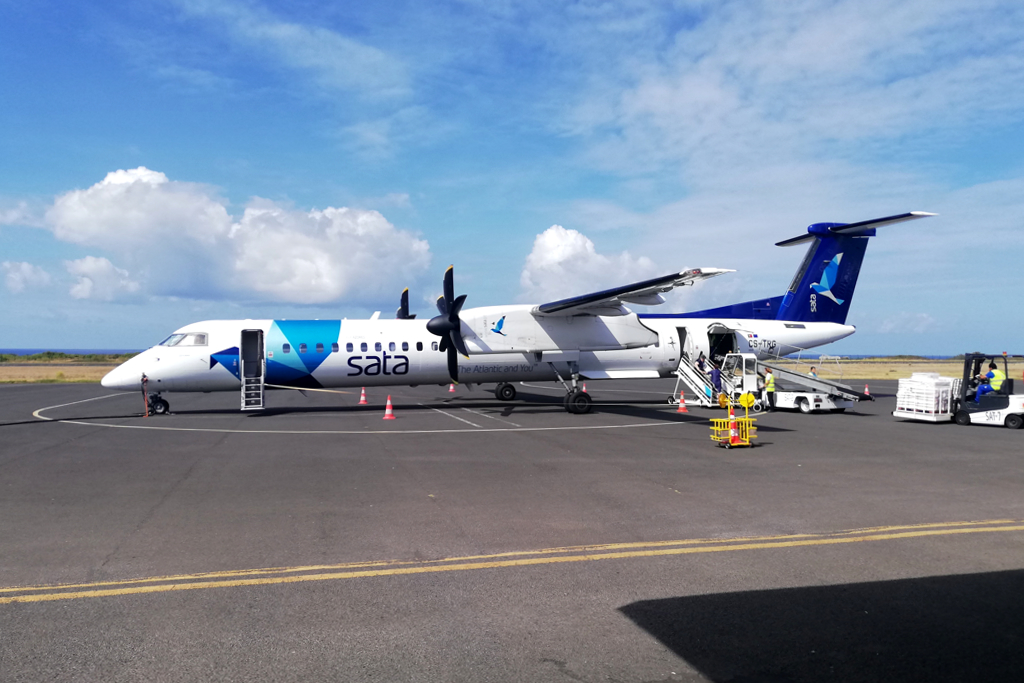
If you don’t rent a car right at the airport, you need to get to your final destination by cab. Note that cabs are not metered on the Azores but have fixed prices that vary according to the distance, obviously.
A trip to Praia de São Mateus, for instance, sets you back ten €uros.
By Ferry
Apart from my personal little mishap, ferries in general offer a scenic and often inexpensive way to travel between the Azores. This works very well most of the time, especially within the central archipelago, as the islands there are close to each other. Yet, if you are flexible and willing to adapt to seasonal schedules, you can basically travel to all islands by sea. Especially from June to September, the connections are more frequent and most islands are served daily. However, it is advisable to book ferry tickets in advance, especially during these months, as ferries are often fully booked.
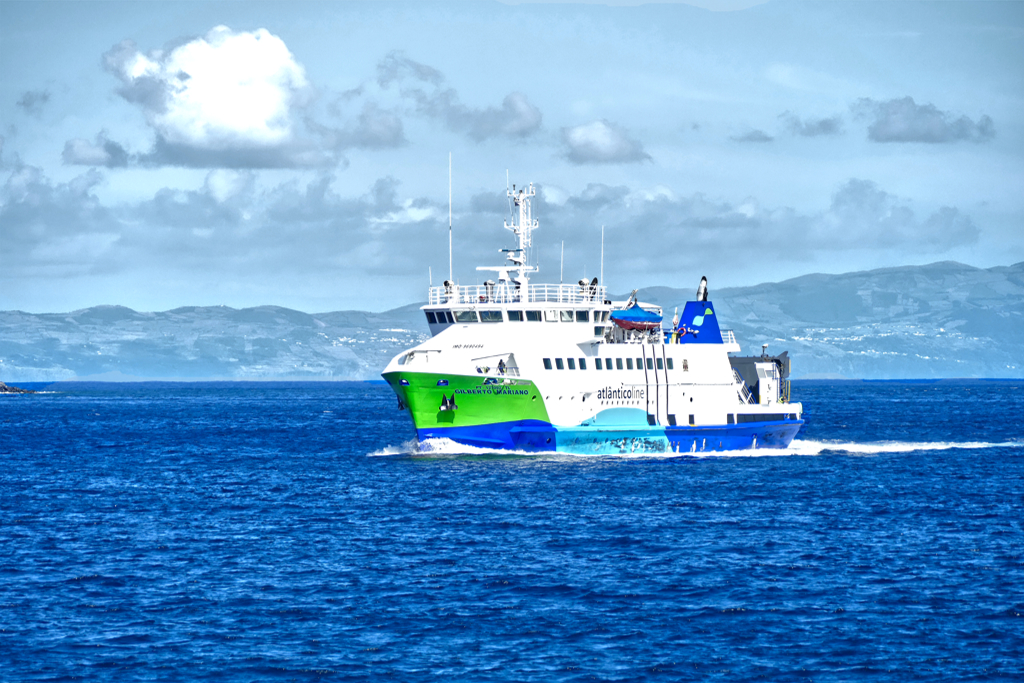
But always remember that ferry connections are heavily dependent on the weather. Especially in autumn and winter, trips can be canceled at short notice due to strong winds or high waves.
As you know, I can tell you a thing or two about it.
Therefore, it is advisable to find out about the current departure times shortly before the start of your trip. Atlânticoline provides current timetables and booking options on their website.
Also, they will call you if your ferry can’t dock, trust me.
How to Get Around
Public transportation in Graciosa is available but limited to very few connections per day. Also, the buses operate in circles. This means that they do not connect places directly. Instead, they travel to various towns and ultimately arrive back at their starting point. Be aware that the timetable only shows the departure times. Therefore, you have to more or less estimate when the bus will be where you want to take it. Albeit, Google Maps shows you the scheduled trips.
Sadly, what Google Maps does not know is that the bus might get to your stop a lot earlier if it didn’t have to stop at other stops for passengers. So make sure you get to your stop at least ten minutes before the calculated departure time.
On Saturdays, there are two buses, on Sundays, there’s none.
Nevertheless, if you want to try your luck, you get all the information and schedules on this flyer.
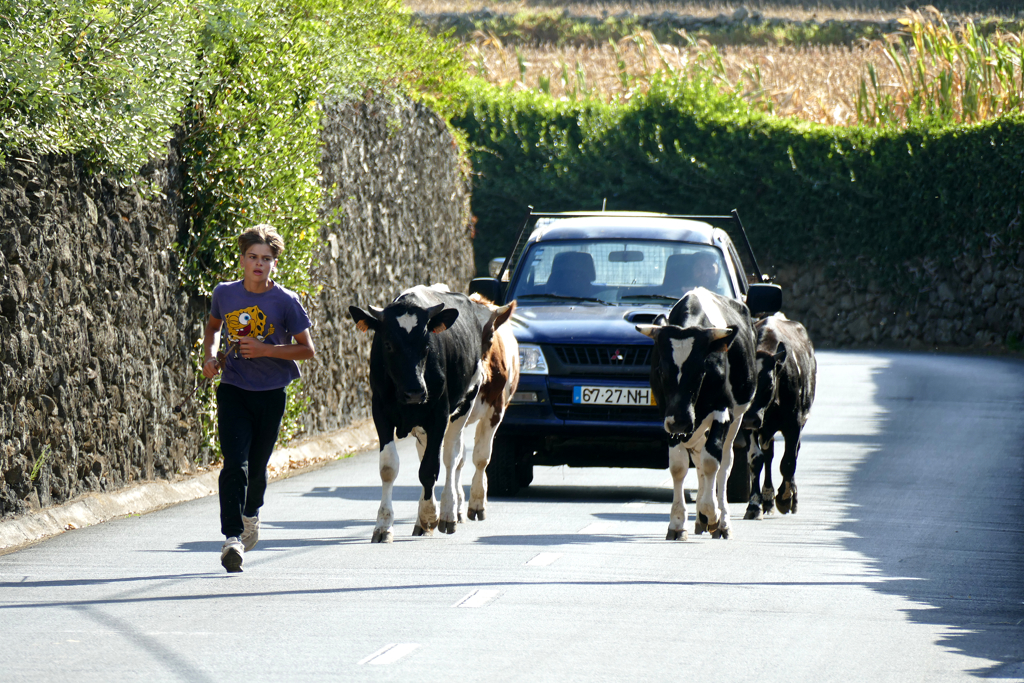
However, remember that Graciosa is really small, so if you get lost and need a cab to pick you up somewhere, it won’t break the bank. Just make sure to have a cab driver’s phone number on you.
As a matter of fact, Graciosa is so small that it’s theoretically possible to explore the island by walking. For instance, it’s about twelve kilometers from the southernmost point of Carapacho to the northern capital Santa Cruz. You can hike that in less than three hours. Just sayin’.
Obviously, you can rent a bike and explore the island by cycling. However, I wouldn’t be too euphoric about it. Although Graciosa is less mountainous than other Azores, the island is still quite hilly. You need very good brakes when going downhill and very strong calves when the road winds up.
Where to Stay
Since the Azores are still rather destinations for true connoisseurs, you’ll find a much smaller choice of lodging options than on other European islands such as the Canaries. While there are even some of those charmless big hotels in São Miguel, on the smaller islands, accommodation is somewhat limited. Therefore, I recommend early booking, especially if your budget has a certain limit.
As the island of Graciosa is a particularly well-hidden gem, the choice of lodging options is rather small. Expect more of a farm holiday, with rooms in old converted ranch houses. The Casa da Madrinha*, where I spent three nights, is particularly charming. The heirs of the madrinha, which translates to the mother-in-law, renovated the old house to a top-modern standard and tried to maintain the traditional flair. It’s about a 15-minute walk above the village, so you have a nice view of Praia and the sea. Especially in the evening when the harbor is lit up, it’s simply gorgeous.
In the fully equipped kitchen, you will find some breakfast staples such as bread, coffee, and tea. You can then supplement this with your purchases in one of the local supermarkets according to your wishes.
Since the Casa da Madrinha* has only three rooms, they might be booked out. Therefore, you can search on this map for valid alternatives*:
What to Eat
The downside to Graciosa not being as touristy is that there are far fewer restaurants. In Praia de São Mateus are the restaurant Toma Lá Dá Cá and the snack bar Vintage. You can also stop off at Café & Sabores Félix for a delicious breakfast or a snack in between. In Santa Cruz, the choice of eateries is somewhat larger.
Fertile volcanic soil, agriculture, and a fishing culture shaped Graciosa’s culinary tradition of simple yet aromatic dishes.
Surrounded by the Atlantic Ocean, seafood is a staple on the island, such as polvo guisado, a slow-cooked octopus stew. Lapas, grilled limpets in garlic butter sauce, are particularly well-known and popular in all Azores. Particularly hearty is Caldeirada de Peixe, a traditional fish stew made from the catch of the day, tomatoes, peppers, onions, and sometimes a touch of saffron.

For a snack, Graciosa’s markets offer produce such as oranges, lemons, and figs.
Graciosa is also known for its Queijo da Ilha, a semi-soft, slightly spicy cheese. Try it with freshly baked bread and a glass of local wine.
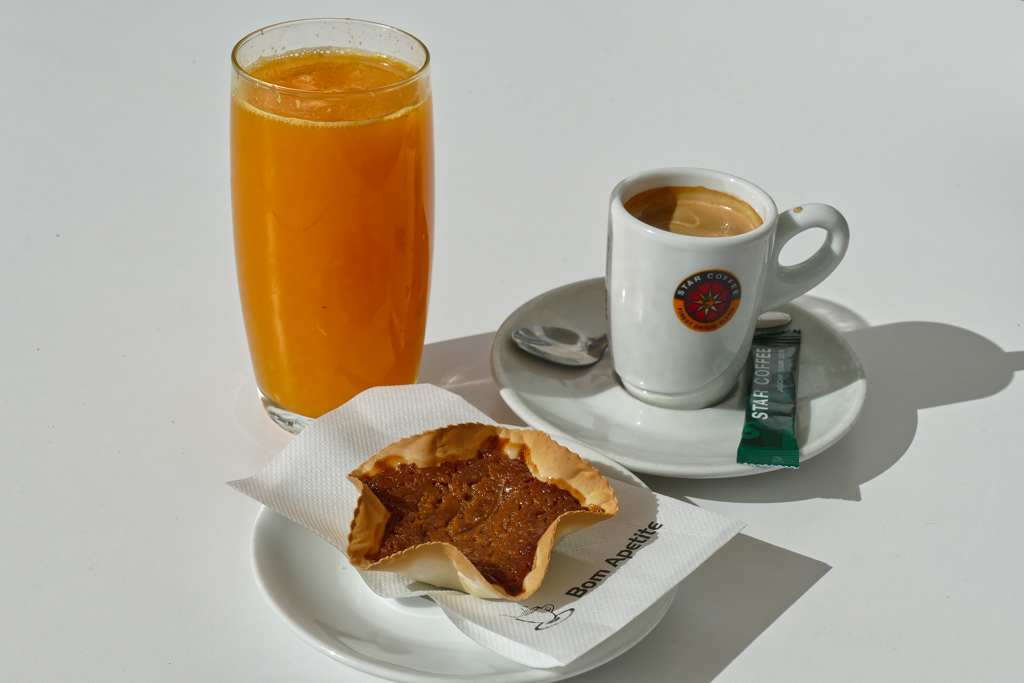
The pastry Queijadas is made on all islands. But Queijadas da Graciosa is a true institution! A custard of eggs, sugar, butter, and milk lies in a crispy dough shell. They are also exported to all the other islands, and hardly any visitor leaves Graciosa without a large box of Queijadas in their luggage.
Cash and Cards
Until now, 20 European countries have replaced their former local currency with the €uro starting in 2002. Obviously, Portugal is one of them. The exchange rate is 1 US$ = 0.85 EUR as of October 2025. However, you can check today’s conversion rate on this page.
You can pay by credit card at basically every business. Nevertheless, you’ll need cash, for instance, for the bus.
Language
Language and communication in the Azores are deeply rooted in the region’s history, geography, and culture. The official language is Portuguese, obviously. Many of the settlers who colonized the islands in the 15th century were from various regions of Portugal where older forms of Portuguese were spoken, so remnants can still be found in Azorean dialects. As a matter of fact, each of the nine islands has variations in accent, vocabulary, and pronunciation, making Azorean Portuguese quite diverse. Despite these differences, people from the different islands can generally understand each other, and the dialects are still considered part of the broader Portuguese language family.
The Azores has a significant history of emigration, particularly to the US, Canada, and Brazil. Therefore, in communities with strong ties to emigrant families, many Azoreans speak both Portuguese and English. In fact, English has become a secondary language in some areas due to the large Azorean diaspora in English-speaking countries. Also, due to international tourism, basically everyone working in that field speaks English more or less fluently.
Nevertheless, if you want to learn some basic Portuguese or just brush up on your knowledge, there are various apps and online tools. I personally like to practice with babbel.
Connection and Communication
Since June 2017, no roaming charges have applied within the EU with a European mobile phone contract. This applies to all 27 countries of the European Union as well as Iceland, Liechtenstein, and Norway. It pertains to all contracts.
When roaming is not available, you can connect to the internet at basically every museum, eatery, and, of course, hotel.
If you insist on being online 24/7, you can get a SIM card. For the best network coverage and balance of data options, MEO is considered the top choice for tourists visiting the Azores, especially for travelers heading to more remote islands. They offer prepaid SIM cards for tourists, MEO Go being the best option for tourists. You can get 15GB of data for 15 €uros, valid for 15 days. After that, you can top up, obviously.
MEO SIM cards can be purchased at Lisbon or Porto airports, in case you’re arriving in mainland Portugal first. Otherwise, you can get them at MEO stores across the Azores.
Other popular companies are Vodafone, NOS, and Lycamobile.
In Portugal, they use plug types C and F. Their voltage is 230 V and the frequency 50 Hz. Whereby, as nowadays all these chargers have integrated adapters, in general, the voltage and frequency don’t really matter.
By the way, you’ll find comprehensive travel info in my post World’s Most Complete Travel Information – an indispensable globetrotter classic.
Map
On this map, I’m showing you where to find the spots worth visiting during a stay on the island of Graciosa. Clicking on the slider symbol at the top left or the full-screen icon at the top right will display the whole map, including the legend.
Glorious Graciosa was just one of the islands I visited while island hopping in the Azores. To read about the others, go to this post and take your pick!
Pinnable Pictures
If you choose to pin this post for later, please use one of these pictures:

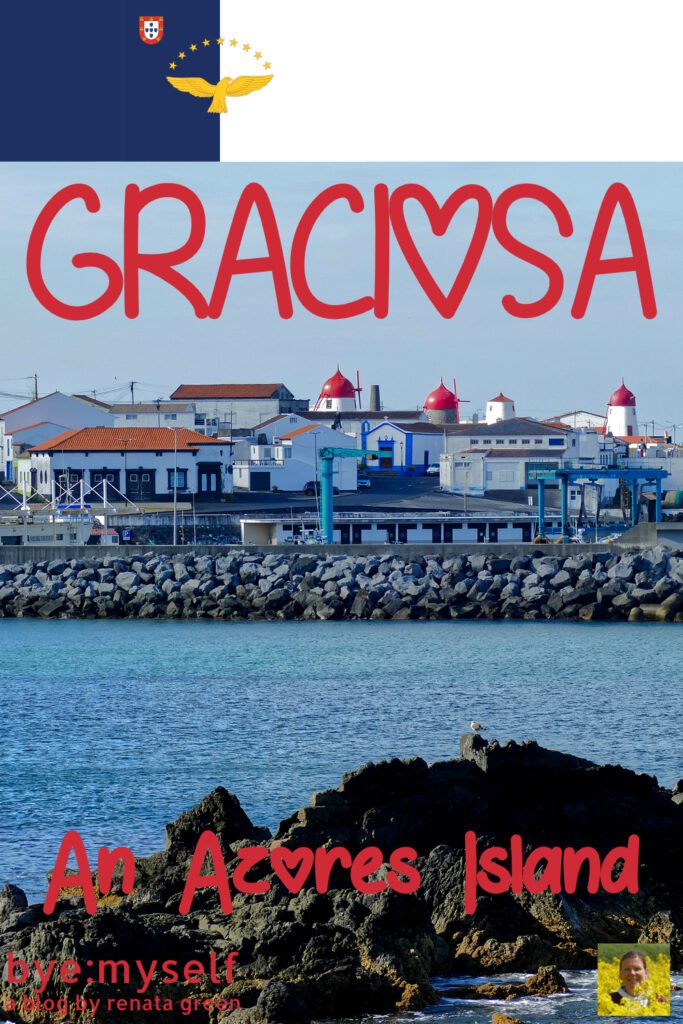
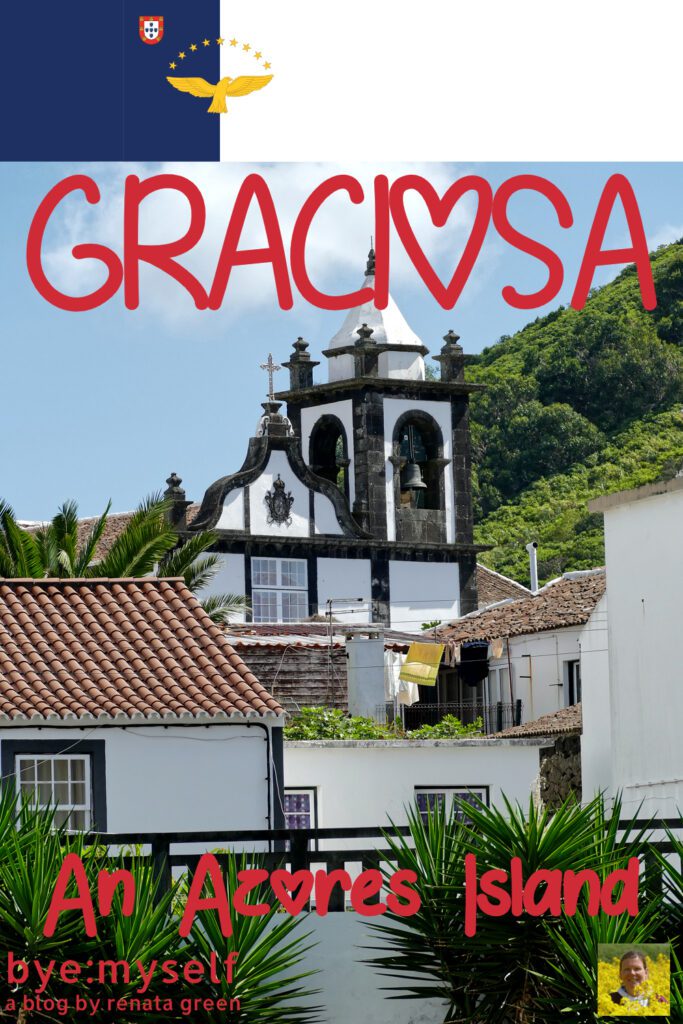

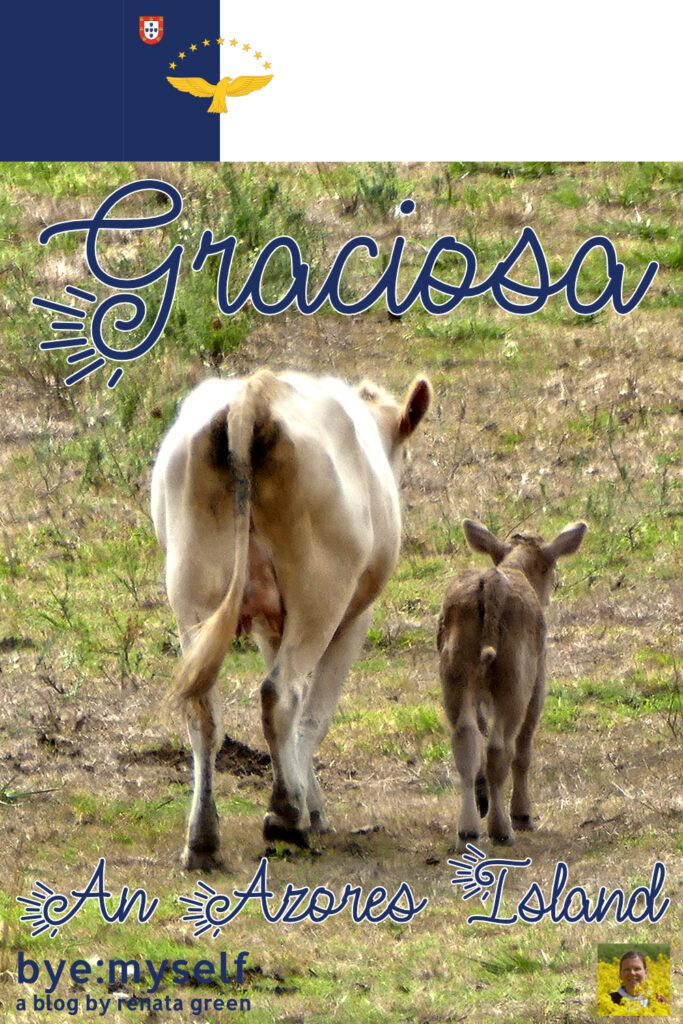
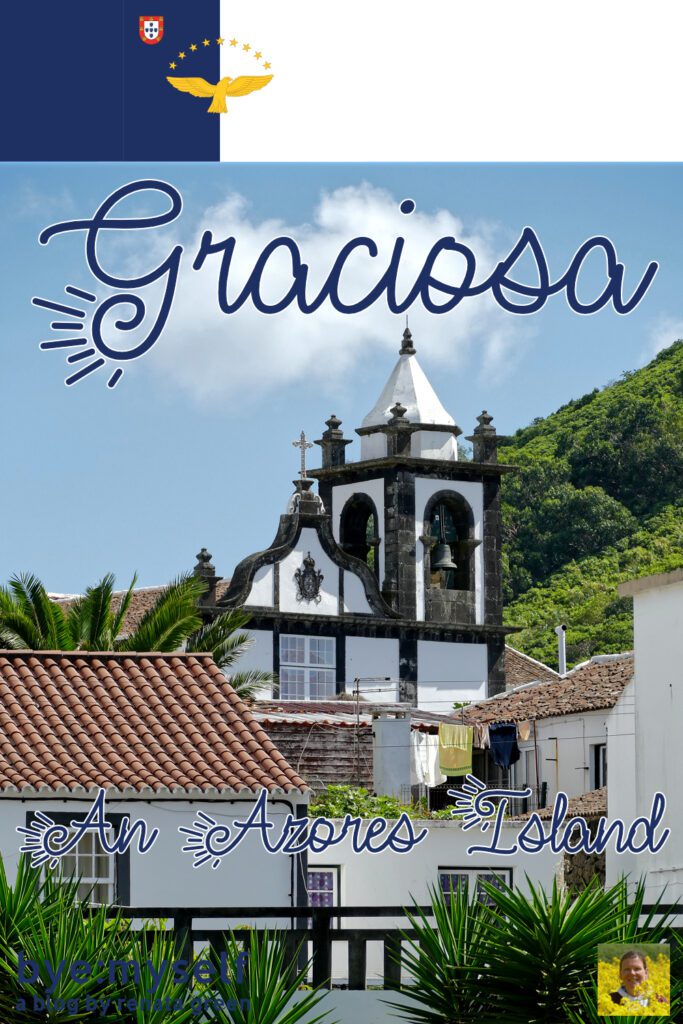
Note: I’m completing, editing, and updating this post regularly – last in October 2025.
Did You Enjoy This Post? Then You Might Also Like These:
Best Street Art in LISBON – Part I: Graça And Beyond
Guide to FIGUEIRA da FOZ – a Charmingly Old Fashioned Seaside Resort
ISLAND HOPPING in the AZORES
24 hours in PORTO
Railroad Trip PORTUGAL
24 hours in LISBON
Guide to BELÉM – Lisbon’s Treasure Box
PICO – the Top of the Azores
* This is an affiliate link. Hence, If you book through this page, not only do you get the best deal. I also get a small commission that helps me run this blog. Thank you so much for supporting me!
